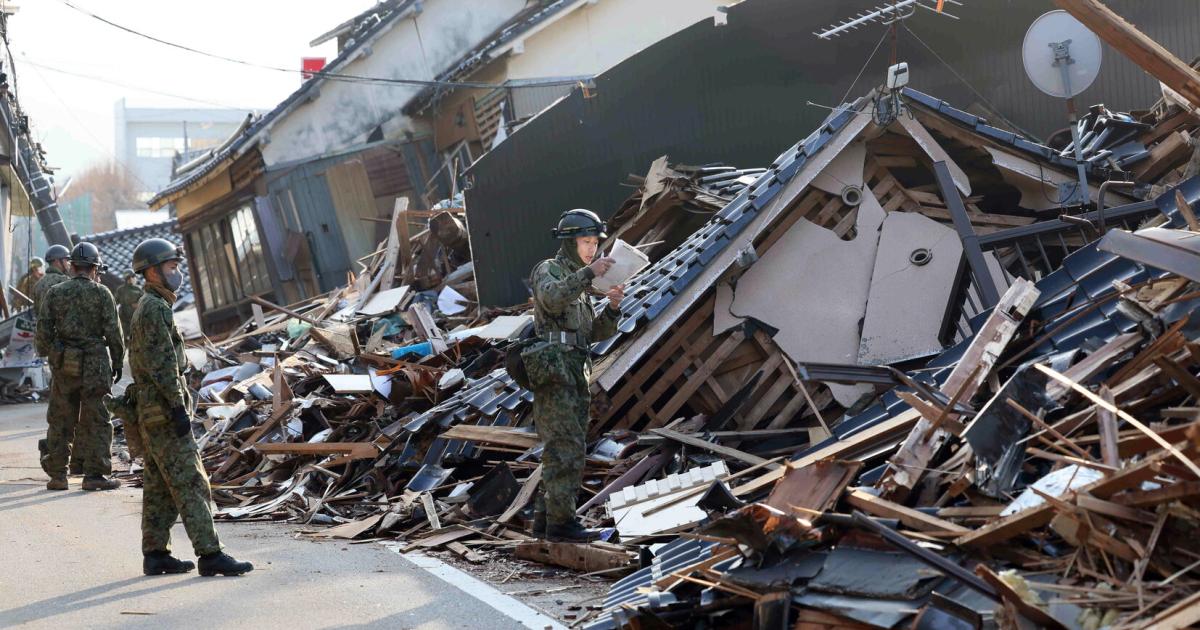The death toll from the devastating earthquake in Japan on New Year's Day has further risen to 126. According to the latest information from local authorities on Saturday, around 210 people were still missing.
“We sincerely pray for the repose of the souls of the deceased,” Japanese Prime Minister Fumio Kishida said on the X online service.
➤ See more information: Earthquake in Japan: number of earthquake victims continues to rise
At an emergency meeting, Kishida called on ministers to repair roads “urgently and quickly” to help hundreds of people in isolated areas.
The work of thousands of rescue teams is currently being hampered by bad weather conditions and road damage, as well as around thousands of landslides. Snow is also forecast for Sunday.
➤ See more information: 1,200 tons of dead fish: mysterious mass extinction off the coast of Japan
The main Japanese island of Honshu was rocked by a powerful 7.5 magnitude earthquake as well as dozens of aftershocks and hit by tsunami waves on New Year's Day. Numerous houses collapsed or were damaged on the Noto Peninsula in Ishikawa Prefecture. Roads were impassable and a massive fire destroyed a historic shopping district in the port city of Wajima.
➤ See more information: Japan has a new island after a volcanic eruption
About 23,200 families in Ishikawa had their power cut and more than 66,400 did not have access to running water. Hospitals and homes for the elderly and disabled were also affected. More than 30 thousand people found refuge in 366 government shelters.
“We are facing an extremely difficult situation” due to the water supply failure, said Ishikawa Governor Hiroshi Hase. Restoring running water will take a long time because many water pipes have cracks.
➤ See more information: Japan suffers from chronic sleep deprivation
Japan is rocked by hundreds of earthquakes every year. Most leave no damage, which is in part due to strict building regulations that have been in place for decades.
Over the past five years, earthquakes have increased in intensity and frequency, especially in the Noto region.
➤ More stories from the world chronicle can be found here

